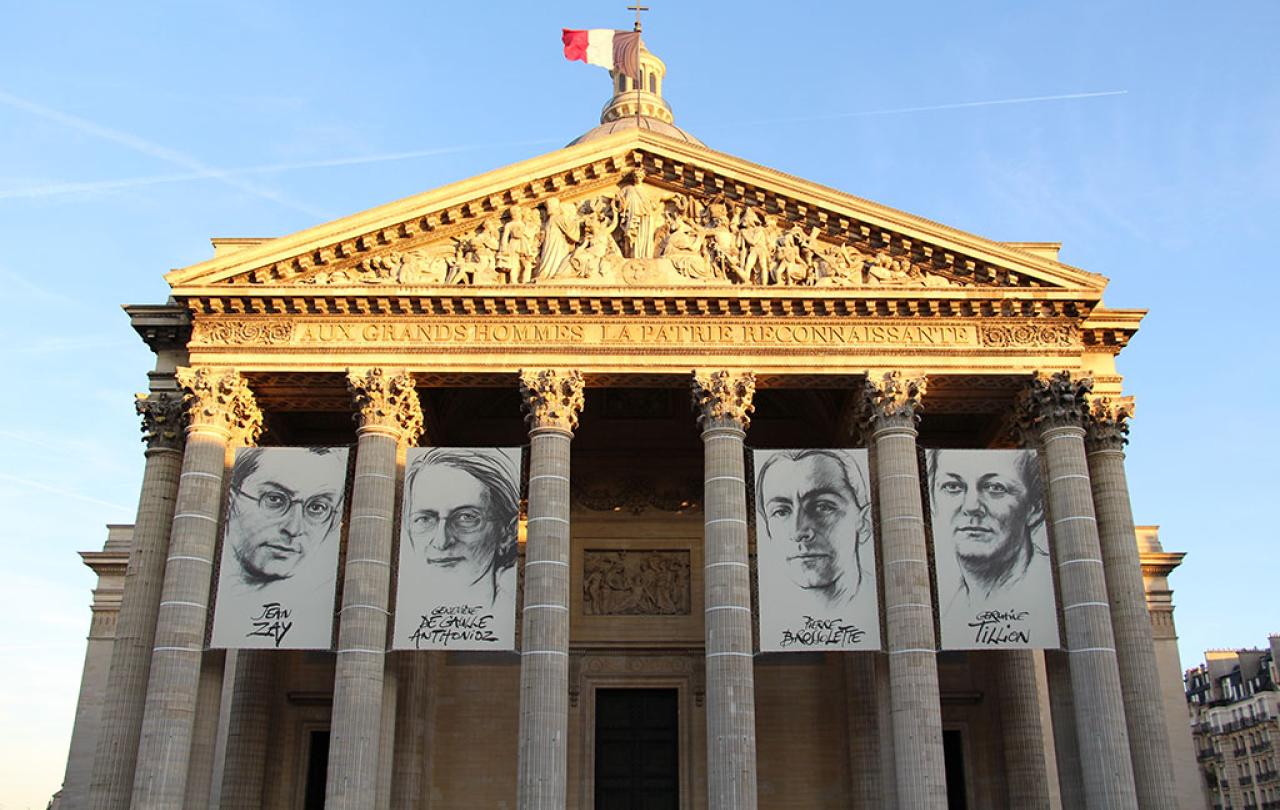
In the dusk light, I could just see the order of service in my right hand and the candle in my left. As the clergy processed from the back of the Cathedral, the smell of frankincense proceeded them.
Light was passed from the fire pit at the back of the building, via the huge pillar of the Paschal candle at the front of the procession, to tapers taken to the end of each row of seats. Then, finally, it was passed from person to person, as each of us lit our candle from our neighbour’s. As a warm glow filled the huge room, I could now read the paper in front of me. Just in time to join in with the start of the singing.
It was the evening before Easter Sunday and I, along with 22 others, was going to be baptised that night. Having grown up in a non-religious family, I was not christened as a child. And so, aged 26, I made the choice for myself to draw a line in the sand of my life and commit to being a follower of Jesus.
I didn’t realise at the time, but the practice of being baptised at Easter goes right back to Jesus’ first followers in the early church. Of course, taking part in a ritual of rebirth on the day that Jesus came back from the dead makes a lot of sense, when you think about it. That service was the beginning of a new life for me in many ways, and also the beginning of a love for this kind of high-drama expression of church.
I love that there are so many different expressions of Christianity. Different ways of being together, of worshipping God and shaping the church gathering. Whilst I have tended to be part of churches that lean more towards contemporary music and less formality, I enjoy taking the odd excursion to other types of church. And for me, Easter is the perfect time to embrace more traditional – or “high church” - ways of worshipping.
The secular world has kept hold of a couple of the edible Lent and Easter traditions. Fair enough; I don’t need much convincing to eat pancakes or chocolate eggs either. But I’d say that topping and tailing this season with sweet treats, without the full spectrum of bitter, salty, sour and umami in between, is a missed opportunity.
Lent
Lent helps us to remember the 40 days and nights Jesus spent in the desert, when he was tested and tempted. It is a time to reflect, think about things in our lives which we want to change, perhaps even to ask God for forgiveness for. It is a time to dwell in God’s word through the Bible and to fast. That’s where the pancakes come in, to use up the sugary and fatty ingredients in the house so we aren’t tempted to eat them in Lent. Though nowadays you’re probably as likely to find people taking up a wholesome practice or habit in Lent, as you are to find them giving something up.
I’d argue that in the modern world we aren’t great at thinking about death and darkness. We try not to dwell on the things we might need forgiveness for. Instead, we supress them and pretend they don’t exist. We can move so far the other way that we fall into toxic-positivity; we deny the breadth of what it is to be a human in this world. That’s why the symbols and rituals of Lent and Easter can be so helpful. They give us containers in which to explore the whole range of human experience and emotion. They give us permission to enter into the depths of it all.
Ash Wednesday
So, after you’ve put the Jif lemon away from Shrove Tuesday, you might like to go to an Ash Wednesday service to mark the start of those 40 days of Lent. You’ll find this service in Roman Catholic churches as well many Anglican churches and some other protestant traditions. The culmination of the service will be the “imposition of ashes”, hence the name. The palm crosses from the previous year (more on that later) will have been burned and mixed with water to form an ashy paste.
Those present will be invited to come forward and have an ash cross marked on their forehead. As the priest does this, they will say to each person:
“Remember that you are dust, and to dust you shall return.”
I realise to some this may seem quite morbid, and possibly eccentric. But if you can suspend your inner cynic, you might find that there is something rather freeing about remembering that we are made from dust.
When the writers of Genesis, the opening book of the Bible, wrote those words centuries ago they didn’t know, as we do now, that the elements that make up each human were formed in supernovas. But they knew that we are intrinsically linked to God, one another, the earth and the universe. Remembering that I am dust puts things in perspective; I am only here for a short time and many of the things I expend energy worrying about are inconsequential. But it also hints at a miracle; I am a thinking, feeling being, made from pieces of billion-year-old stars.
Lent is time to ponder such mystery. As the season progresses, people may try to carve out more time than usual for spiritual practices like prayer and reading the Bible. If you give something up, you’ll likely find the discipline of sticking to it helps focus the mind. It brings you back to the things you want to contemplate. I think the hardest thing I ever gave up was coffee; I did a lot of thinking that Lent.
Palm Sunday
Churches tend to follow the story of Jesus’ last days on earth throughout their services in Lent. The last Sunday before Easter marks Jesus’ final arrival in Jerusalem before he was killed. We read in all four gospel accounts that Jesus, whose renown had spread by this time, entered the city to be greeted by huge cheering crowds. Many were said to be waving palms, which is why it’s become known as Palm Sunday. Many churches give out crosses made from palm fronds as a tangible symbol of the story.
Holy Saturday in fact represents where we spend much of our time in life. The in between. The messy middle.
Holy Week
From Palm Sunday we enter into Holy Week, which runs right up to Easter, as the story intensifies. Many churches will have additional services during this week, which vary depending on the tradition of church and local habits. As a night owl, I am a big fan of compline, the night prayer service used in many monasteries and new-monastic communities. A couple of years ago I lived in an Anglican parish where they had compline every night during Holy Week. The compline liturgy – its format and typical pattern of words – helps me reflect and wind down at the end of the day. My delight in being able to take part in the service every day that week was only increased by the fact that several people each evening brought their dogs with them.
Maundy Thursday
The Thursday of Holy Week - referred to as Maundy Thursday - marks the last supper and Jesus’ arrest. The word maundy comes from the same root as the word mandate, because at the last supper Jesus gives a new mandate, or commandment to his disciples. He says “I give you a new commandment, that you love one another. Just as I have loved you, you also should love one another. By this everyone will know that you are my disciples, if you have love for one another.”
One of the ways that Jesus expressed this love for his disciples at the last supper was to wash their feet. Constantly wearing sandals or bare feet in a sandy environment meant frequent foot washing was needed in first century Palestine. Usually those of lower standing would be the ones doing the washing, but Jesus flips this on its head. Despite being their rabbi – their teacher – Jesus is the one who ties a cloth round his waste to wash his followers’ feet in an act of service. Often this is re-enacted at a Maundy Thursday service, with the priest or leader washing the congregation’s feet. It is a way of trying to live out that new commandment, to love each other as Jesus has loved us.
A Maundy Thursday service often happens in the evening, when the last supper would’ve taken place. To acknowledge the sadness and indignity of Jesus’ betrayal by Judas and his unjust arrest, in many churches the congregation will strip the alter of all its decoration at the end of this service. There may then follow a silent vigil, where people are invited to stay into the night, keeping silent watch, as Jesus asked his disciples to keep watch as he prayed in the Garden of Gethsemane. The alter will remain bare and empty until Sunday.
Good Friday
That starkness suits the mood as we move into Good Friday, the day that marks Jesus’ execution on the cross. Of course, we have the benefit of knowing the redemption and renewal which is to come when Jesus comes back from the dead, but I expect that Jesus’ devastated followers would not have called it good at the time.
On Good Friday we sit in the pain of knowing that Jesus was taken by the authorities and violently killed. We come face to face with all the worst that human experience can entail. Hurt, anguish, desolation, loss. We do this not in spite of or in ignorance of the resurrection and joy to come. We don’t do it to be morbid, or to wallow in pain for the sake of it. We do it because sadness and grief are valid parts of the human experience. And, because being a follower of the God who became human and entered into our suffering, is to remember that he died.
Services taking place on Good Friday will vary according to the traditions of each church, but they will be reflective and sombre in nature. Some will simply hold space for people to sit and reflect on the magnitude of the day’s meaning. Others will hold services which take in the fourteen scenes which tell the story of Jesus’ death, known as “stations of the cross”. Some churches have artworks depicting these on their walls at all times, others will put something up for the occasion. People may move around each scene – from Jesus being condemned to death, to being laid in the tomb – taking time to reflect, read the bible and pray at each. It is a way of recreating a pilgrimage to the cross and entering into the story of Jesus.
Holy Saturday
The comes Holy Saturday, the day before Easter. But it is not practiced with the same excitement as Christmas Eve. The anticipation of Lent is different to the anticipation of Advent. Whilst the joy of Jesus being resurrected from the dead is arguably even greater than the joy of his birth, we must – like too often in life – pass through grief to get there. Even though we have the advantage over Jesus’ disciples of already knowing that Jesus will rise from the dead, Holy Saturday in fact represents where we spend much of our time in life. The in between. The messy middle. Knowing that painful Good Friday experiences happen in the world, whilst looking to the hope of renewal which Jesus promises.
Some churches, like the Cathedral I was baptised in, will carry out their Easter vigil late on Holy Saturday. Others will save that celebration of the resurrection until first light, beginning Easter Sunday with a dawn service that follows a similar pattern with fire and candles. Some churches will even eat together after the formal part of their time together is finished. I remember having to get up at 5am one year to cook the 50 sausages which were my contribution to the cooked breakfast we shared, though I did doze in the kitchen whilst they were in the oven.
Easter Sunday
Of course, the vast majority of churches will have their usual service slot on a Sunday. However many of these rituals they have marked in the lead up, each community will take time on Easter Sunday to celebrate. Because the tomb is not the end. When some of his women followers went to cleanse his body, Jesus was not there. He rose again. It is this promise of death being defeated which we remember and celebrate at Easter. From the depths of darkness, we emerge into light.
My favourite part of the Easter Sunday service is when the leader proclaims “He is risen,” and everyone responds with “He is risen indeed. Alleluia!” at the top of their lungs. Through the mystery of his death and resurrection, Jesus gives us certain hope that all people and all of creation will be renewed and reconciled to God in the fullness of time. And that’s worth shouting about.



